- Home
- Larry McMurtry
The Colonel and Little Missie Page 18
The Colonel and Little Missie Read online
Page 18
It is perhaps worth mentioning that Frank Butler’s job with the cartridge company relied on what is now called product placement—the conspicuous use of brand-name products in shows and exhibitions was going strong in Cody’s day. Buffalo Bill was advertised as using only Winchester ammunition. Annie Oakley only shot Stevens shotguns, while Johnny Baker had an exclusive commitment to the Parker arms company.
In 1903, a couple of years after Annie’s hair turned white, an incident occurred that shocked her so that her hair might well have turned white had it not already been white. A story appeared in Hearst’s Chicago papers, the Examiner and the American, with this headline:
ANNIE OAKLEY ASKS COURT FOR MERCY!
The reporter, somewhat incredibly even for Hearst, informed the public that Annie Oakley was in jail for stealing the trousers of a black man, meaning to sell them and buy cocaine. Given Annie’s extreme modesty, the notion that she would touch the trousers of any man except her husband, and then only to launder them, must have sent her reeling. The story, written by a reporter named Ernest Stout, went out over the Publishers Press wire and was picked up by many newspapers all over the country. Astonished friends, who knew the story couldn’t be true, clipped the stories and sent them to Nutley, New Jersey, where the Butlers were then living. The more Annie read, the angrier she became.
The fact that the story could be easily disproved didn’t really assuage the hurt and fury. It was easy enough to establish that she had not been in Chicago for more than a year, but what may have hurt most in the absurd story was the suggestion that she was poor. In her youth she had been poor—she knew its terrors and shame too well.
That Hearst ran this story, which he knew would be picked up by many newspapers, suggests how uncritical the world of yellow journalism really was. It was tabloid journalism, pitched well beyond the boundaries of believability. Nowadays such a story might claim that Hillary Clinton had sex with aliens, or something of the sort. Nonetheless, the effect on Annie Oakley was real.
For the next five years Annie went about the tiresome, expensive business of clearing her name. Her whole life had been devoted to building her reputation as a lady, and a lady of firm character as well. She was not about to see it lost. The libel process was tricky, as it is now, but she pursued her nemesis with the same determination that she had once applied to her shooting.
According to Shirl Kasper, the first twenty newspapers she sued paid her sizable libel fees. Hearst, in an effort to sully her if he could, sent a reporter to Greenville, where the Butlers had moved; but the locals were so outraged that someone was trying to dig up dirt on their beloved Annie that the town refused the detective a room for the night.
When the trials began, Annie was often sharp-spoken in her own defense. She denied having ever turned somersaults in her act; she denied having worn leggings, or having allowed her skirts to fall. When asked about education she said it was a very good thing in a person with common sense but a very bad thing in the hands of a cheap lawyer.
In time she sued fifty-five newspapers, collecting from all but one. Many of the awards were merely tokens but Hearst had to cough up $27,000 at least. Frank Butler claimed that every cent earned above their legal expenses went to charity, but that may not have been strictly true. The Butlers didn’t live lavishly—Annie was too frugal for that—but they did live well.
Competitive shooting remained a very popular sport. In 1916 the New York Times claimed that 36 million clay pigeons had been broken in that one year alone. Annie Oakley—although she chose her shoots carefully—probably broke several thousand of that total.
She still, though, encountered the occasional snub from patrons of the all-male clubs. She was thus very pleased when, in 1913, a rich woman in Wilmington, Delaware, opened the first shooting club for women only.
Frank began to tour a little with his company’s shooting team; sometimes Annie went with him. In a big shoot in Kansas City in 1902 she encountered her old rival, Lillian Smith, who had since been adopted into the Sioux tribe, shooting under the name of Wenona. Essentially, Lillian was in vaudeville. Whether the two met, or what they had to say to one another, is not recorded.
The elite trapshooting circles in those days attracted wealthy men who were usually very good shots. Someone not wealthy would not have been able to afford the travel, or the ammunition. For much of his life Frank Butler shot as well as his wife—he won his share of competitions—but he accepted the fact that Annie was the star; living in her shadow did not seem to bother him. Annie may have had a little more grit and a little more stamina. In 1906 she hit 1,016 brass discs without a miss. She was competitive, she enjoyed winning, and to the end, she was reluctant to pass up money.
14
WHY, when she decided to return to touring in 1911, Annie chose the fledgling Young Buffalo’s Wild West, is something of a mystery. She did visit Cody and Gordon Lillie first; she had worked for both of them and liked them. Perhaps she merely wanted a higher salary than that beleaguered pair could readily afford. Perhaps the maintenance upkeep on a major star was more than they felt they could undertake. Annie may have had no desire to upstage Johnny Baker, who was the big shooting attraction at the time. Perhaps she liked it that Young Buffalo’s show was a little more circuslike, with six elephants and some very talented clowns.
When she quit Young Buffalo in 1913 she was through with touring forever, though not entirely through with show business. The movies were beckoning. She had been persuaded to take a primitive screen test, though not much came of overtures from this new medium. She was fifty-three at the time. A little later she had her last encounter with Cody, an old man by then and already sadly in the grip of the financier Harry Tammen. Cody and Gordon Lillie had been operating a kind of half circus called the Two Bills Show. Although Cody only owned half the show he unwisely made a note to Tammen that failed to secure Lillie’s half for Lillie. When the note came due Tammen sold the livestock and equipment at a sheriff’s auction. Though Gordon Lillie was financially well off, he probably—and with justice—never forgave Cody for this last betrayal. Cody may not have forgiven himself either—he knew that what he had done was disgraceful, but by then he was leading a slipping-down life and could not arrest the slippage.
15
OVER the years, whenever Cody fancied himself somewhat ahead in the financial game, he formed the habit of sending sizable sums of money home to Lulu, back in North Platte, with the instruction to buy real estate. Lulu had always been nothing if not practical. She was well capable of securing a good piece of land, or a well-constructed house, if one came on the market.
Cody, of course, thought he was building himself a secure financial position by this method. If the show failed he always had his holdings in North Platte. He could ranch if necessary. He could sell some of that cheaply acquired property.
Imagine his shock, when he found himself in a financial crisis in the 1880s, to discover that this financial haven did not exist. Lulu had been buying real estate all right, and buying it as shrewdly as he had expected, but the catch was that she had put every plank and acre in her own name. Except for his interest in Scout’s Rest, where Lulu would no longer consent to live, he owned nothing much in Nebraska that could be turned into ready cash. The cushion he had been counting on simply did not exist.
No doubt Cody laid heavy siege to Lulu at this time—after all, she was still his wife. He knew he hadn’t been a perfect husband, but neither had he been a total scoundrel—at least not in his opinion. Hadn’t he provided for her handsomely? Hadn’t he left her more or less unrestricted?
In Lulu’s mind he had left her far too unrestricted—in her mind that meant loneliness and abandonment. She quarreled frequently with his sisters—she thought brother Bill was far too generous with them.
Nor could she reconcile herself to his girlfriends. This came out in court depositions in 1905, when Cody was trying to divorce her. Not only was Lulu jealous of Queen Victoria and Princess Alexandra, ther
e were other less distant women to provoke her jealousies, the actress Katherine Clemmons being one. But there were a number of others, and when Lulu’s temper was up, the mere mention of any of them was enough to put her into a glass-breaking mood. At one point, hearing a female voice in her husband’s room in New York, she proceeded to destroy her own well-appointed room. This fit, which must have been spectacular, cost Cody more than $300.
Though the Cody marriage constantly veered from melodrama to farce, there were elements in it which were genuinely heartbreaking. Lulu had married for love, but her husband moved her to an ugly prairie town and left her. She spent much of her life feeling abandoned. Cody was never any particular help with the children. He provided well financially—Lulu was never impoverished—but he didn’t provide well emotionally. Clearly Lulu would rather have had less money and more time with Bill—that is, she would have until she grew hardened.
Cody never entirely lost his affection for his wife—it was just that his affection was fitful. He made one of his brothers-in-law, Al Goodman, general manager of the Nebraska properties, with instructions to try not to mind Lulu. Here, from a letter he wrote Goodman: “I often feel very sorry for her. She is a strange woman, but don’t mind her—remember she is my wife—and let it go at that. If she gets cranky just laugh at it, she can’t help it.”
But the kettle of the Cody marriage continued to seethe, seething and seething for more than forty years. Cody’s actress-kissing tendencies were always likely to surface. At one point Lulu strongly suspected that he had bestowed a kiss or two on his press agent, Bessie Isbell, after her visit to North Platte.
An odd, sad grievance surfaced in the divorce proceedings in 1905. One of the reasons he wanted out, Cody claimed, was that Lulu had tried to poison him on a Christmas visit in 1900. The artist Dan Muller was witness to this strange incident and confirms that Cody collapsed and was temporarily deprived of speech, while having some sort of drink with his wife. Dan Muller loved Lulu, and knew she was not a poisoner, but something had happened to bring the Colonel low that night.
The “something” turned out to be a love potion that Lulu, in her desperation, had purchased from a Gypsy. It was called Dragon’s Blood. What it contained nobody knows, but its purpose, of course, was to enable Lulu to recapture Bill Cody’s affections. After thirty years, she was still trying.
Lulu’s attorney suggested that it was probably not the first time that Colonel Cody had been falling-down drunk—but the fact of the Dragon’s Blood was soon revealed.
16
DESPITE his looks, fame, and willingness to kiss girls, Buffalo Bill Cody was not a notable success with women. The first one, after Lulu, to bedevil him was the American actress Katherine Clemmons, whom Cody met during his first London show. She was good-looking, but no Bernhardt or Duse, as Cody fondly supposed her to be. He financed one play in England and another in America, the latter a spectacular flop that cost Cody many thousands.
Katherine Clemmons was an energetic opportunist. She had had a frontier background and was more than able to keep up with Cody when it came to drinking. How much she ever cared for Bill Cody is at this distance hard to say, but he was far from being the only suitor to enjoy her favors. She was tempestuous and could match Lulu fit for fit if need be. Perhaps the fits were what prompted Cody to say that he had rather manage a million Indians than one soubrette.
Still, the two carried on for a few years, until Katherine Clemmons concluded, accurately, that Cody didn’t really have much money and would be more than likely to lose most of what he had. She was looking for bigger bucks and secured them—or supposed she had—by marrying the son of the fabulously wealthy Jay Gould. Howard Gould was as eligible a bachelor as anyone could hope for, but by 1907 he divorced Katherine, citing infidelity with several men, one of them Buffalo Bill Cody.
The end of this sordid story does Cody great credit. During the divorce proceedings the Goulds offered Cody a goodly sum—$50,000—if he would testify against Katherine. Cody, though desperate for money at the time, threw the gentlemen out of the room.
Lulu wasn’t always on the attack. During the divorce proceedings, which failed, she remarked to one reporter that “Will was the kindest and most generous of men.”
Cody proved to be a terrible witness for himself. Aside from the ridiculous matter of the poisoning he couldn’t come up with any convincing reason as to why the judge should grant him a divorce. He could not remember dates or incidents, and was constantly tripped up in his testimony, not only by Lulu’s lawyers but by his own.
Divorce was no snap in 1905. The judge believed every word Lulu uttered, but believed few words of Cody’s. He rejected the petition, leaving the Codys to struggle on with one another for another dozen years.
17
EXCEPT for his misguided attempt to ride the brute buffalo known as Monarch, Buffalo Bill, as a showman, did well with his namesake animal, the buffalo. Horses were another matter. He lost nearly five hundred in the big train wreck near Danville in 1901, and disaster was to strike his horse herd a second time, in Europe in 1906, when the show horses were stricken with glanders, reducing their numbers by two-thirds.
Cody’s was hardly the only touring company to find itself at the mercy of events. The Miller Brothers’ famous 101 Ranch troupe toured with some success in the years before World War I—the Millers sported the amazing black bulldogger Bill Pickett. Will Rogers sometimes practiced his rope tricks at the 101 Ranch, and movie star Tom Mix had worked there as a cowboy.
Nonetheless it fell to the Millers to launch the worst-timed Wild West tour of all time: they set out to play Europe in the early fall of 1914. Not long before sailing for England one of the Millers had purchased a lot of half-broken Mexican horses, figuring to tame them as they went along, but they had scarcely disembarked in London when their entire herd was requisitioned for the British war effort. A lot of these unruly Mexican steeds soon saw service on the Western front—very likely most of them were eaten. This tour, or rather nontour, became a nightmare for the Millers. They had already loaned out some Indians to a German circus before the guns began to roar. Getting these Indians back to the States was not easy, but most finally managed to return through Scandinavia.
Cody’s reputation as a lackadaisical figurehead who left all administrative work to Salsbury or Bailey was a little unfair. He was always prone to jaunts—the freedom to enjoy the Western plains and mountains never lost its appeal to Cody. A jaunt or a hunting trip rarely failed to restore his spirits. One of Katherine Clemmons’s big issues with Cody was his tendency to leave on short notice, or no notice. If a bear hunt was offered just as one of Katherine’s ponderous plays was opening, Cody more often than not chose the bear hunt.
He could, though, work when he had to. Not long after Nate Salsbury’s death he penned this complaint:
. . . with the death of my partner I have all the more to do . . . & more responsibility . . . every day, year in and year out, is a rush day for me. I cannot even get one hour to myself to quiet my nerves. Someone wants my time all the time. I have to attend to my own business—and receive company at the same time—to say nothing of the letters I am compelled to write.
It was plain that a company employing over five hundred people and at least that many animals could not be run from a Western campfire, between attempts to locate bears. Cody grew up on the plains; half his life had been spent under the great skies of the West. Yet for most of the second half of his life he was an urban man, a traveler amid the capitals of Europe. Doubtless he enjoyed many of his urban possibilities—actresses, for example; but undoubtedly there were times when he would have liked to chuck it all and go back to North Platte, a choice now rendered impossible because of Lulu’s stubborn refusal to allow him any access to the money she had saved.
In fact, Cody was never—financially—in a position to chuck it all. Despite his endless financial crises and defeats, he remained eternally optimistic about the future. Many propositions cam
e his way: mining ventures, hotels in scenic spots, irrigation schemes to make the desert flower, and of course, inventions and patent medicines on the order of White Beaver’s Laugh Cream.
Cody may have made a little money here and there—he invested in so many schemes that one or two of them probably paid off—but the bottom line, always, was that his main asset was himself. People would come in sizable numbers just to see him ride his horse and shoot glass balls. It was as a showman, showing mainly himself, that Cody got the money to pay his bills. Sometimes he even got a little ahead.
The administrative skill that it took to organize large touring companies is uncommon in any time; Cody was lucky to find, first, Salsbury and then Bailey. Salsbury, observing James Bailey while he still worked with Barnum, left a short description of that well-known modern figure, the workaholic:
Bailey’s capacity for work is enormous, or at least it seems so to me, for I never hear of him devoting any time to anything but work. He told me himself that he cared for nothing but to make a success of his business at any cost. I never heard of him taking any sort of social pleasure. I do not believe he ever attended a theatre or any other form of amusement for the sake of the amusement.
But Salsbury only lasted until 1902, and Bailey to 1906, after which the crème de la crème of big-show managers were no longer available, which is why Bill Cody hitched up his belt and sat down at his desk every morning at eight-thirty. But as he said, desk work was not his forte; and it was the clear need for administrative help, as well as solid financing, that caused him to turn in 1908 to his old rival Gordon Lillie, or Pawnee Bill.
Lillie and Cody had known one another a long time. Cody was fifteen years older than Lillie; the latter was at first, and in some way remained, a good deal starstruck. Lillie had taught for a while at the Pawnee agency; he served as interpreter when Cody and Doc Carver were trying to recruit a few Pawnees for their first show. Lillie was there the day Monarch put Cody in the hospital. Cody may have lorded it over the younger man too much, and he certainly was wrong to blithely imperil Lillie’s half of the Two Bills show, but through it all, Lillie remained clear about one thing: Buffalo Bill was still the biggest name, and the most solid asset, in the touring world of that time. If you had Buffalo Bill, the seats would not be empty. It was because of this certainty that Lillie persuaded the Bailey family to forgive the $13,000 note. He wanted to give Buffalo Bill’s Wild West with Pawnee Bill’s Wild East a chance. (What to us seem cumbersome titles did not discourage the crowds of the time. When Bill Cody worked briefly for the Miller Brothers the show was called “The Military Preparedness, Buffalo Bill [Himself] Combined with the 101 Ranch Show.” The show was a combination rodeo and military review, and didn’t last long.)

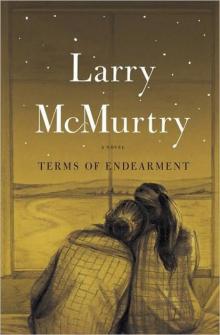 Terms of Endearment
Terms of Endearment Some Can Whistle
Some Can Whistle All My Friends Are Going to Be Strangers
All My Friends Are Going to Be Strangers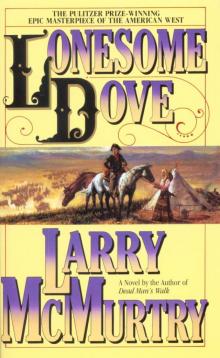 Lonesome Dove
Lonesome Dove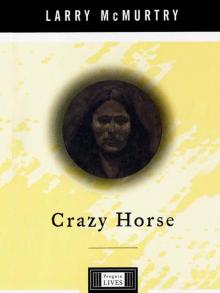 Crazy Horse: A Life
Crazy Horse: A Life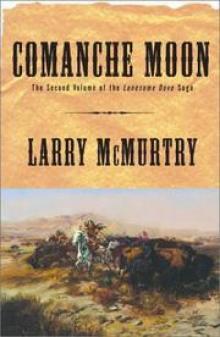 Comanche Moon
Comanche Moon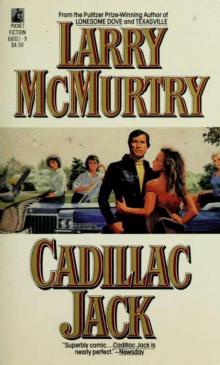 Cadillac Jack
Cadillac Jack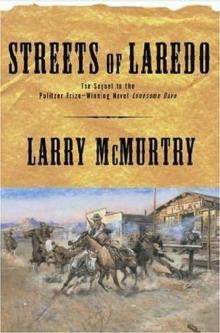 Streets of Laredo
Streets of Laredo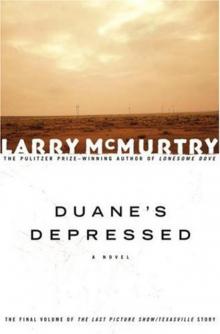 Duane's Depressed
Duane's Depressed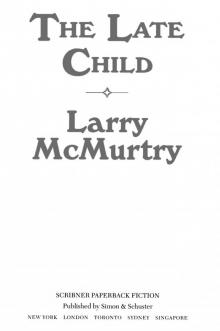 The Late Child
The Late Child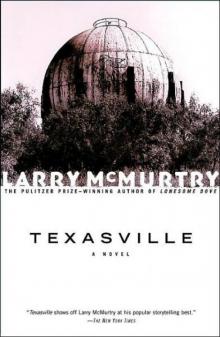 Texasville
Texasville Rhino Ranch
Rhino Ranch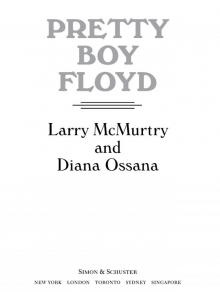 Pretty Boy Floyd
Pretty Boy Floyd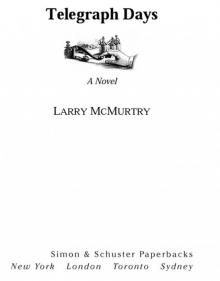 Telegraph Days
Telegraph Days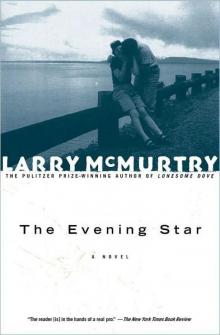 The Evening Star
The Evening Star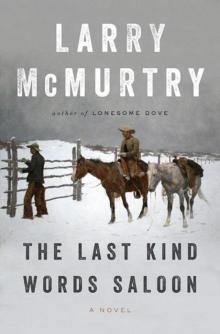 The Last Kind Words Saloon
The Last Kind Words Saloon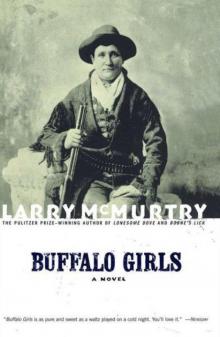 Buffalo Girls
Buffalo Girls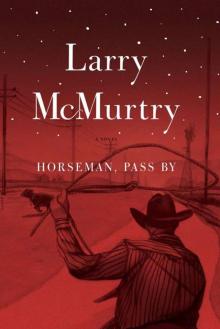 Horseman, Pass By
Horseman, Pass By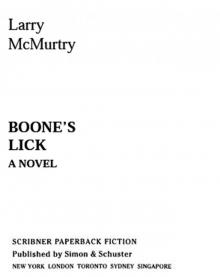 Boone's Lick
Boone's Lick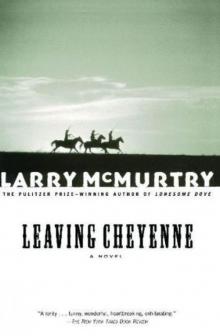 Leaving Cheyenne
Leaving Cheyenne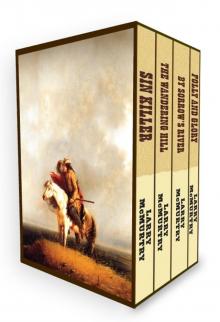 Sin Killer
Sin Killer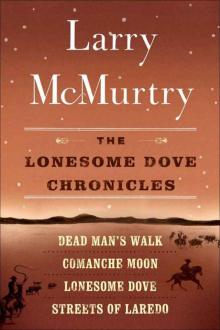 The Lonesome Dove Chronicles (1-4)
The Lonesome Dove Chronicles (1-4)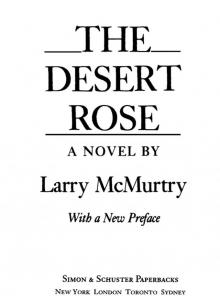 The Desert Rose
The Desert Rose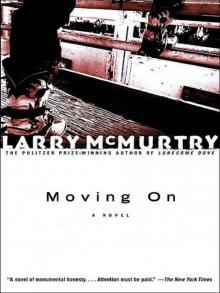 Moving On
Moving On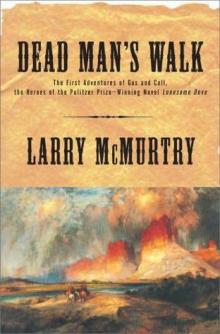 Dead Man's Walk
Dead Man's Walk The Last Picture Show
The Last Picture Show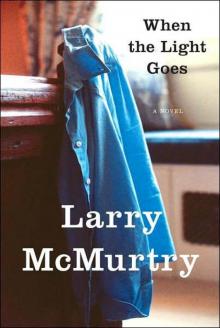 When the Light Goes
When the Light Goes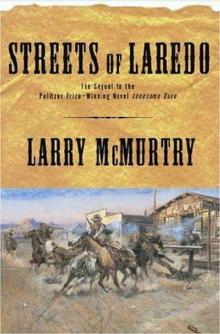 Streets Of Laredo ld-2
Streets Of Laredo ld-2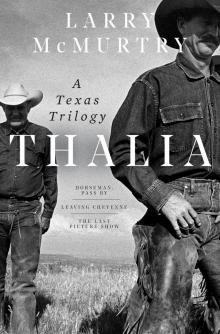 Thalia
Thalia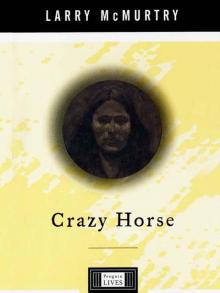 Crazy Horse
Crazy Horse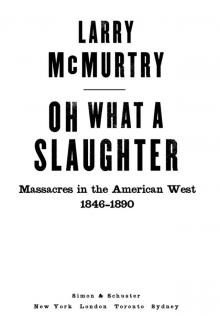 Oh What a Slaughter
Oh What a Slaughter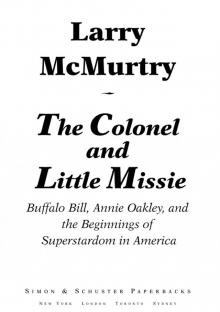 The Colonel and Little Missie
The Colonel and Little Missie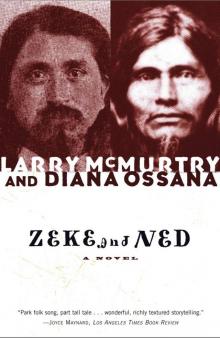 Zeke and Ned
Zeke and Ned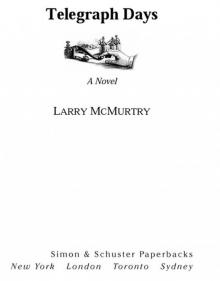 Telegraph Days: A Novel
Telegraph Days: A Novel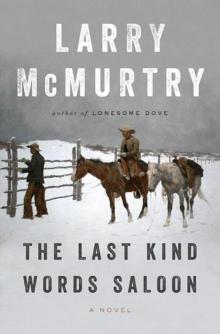 The Last Kind Words Saloon: A Novel
The Last Kind Words Saloon: A Novel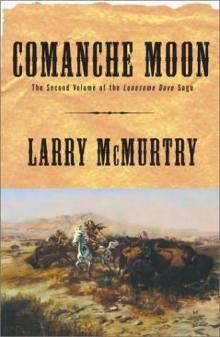 Comanche Moon ld-4
Comanche Moon ld-4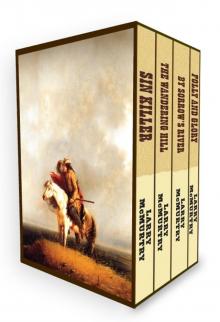 The Berrybender Narratives
The Berrybender Narratives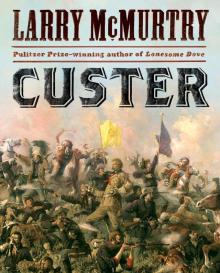 Custer
Custer